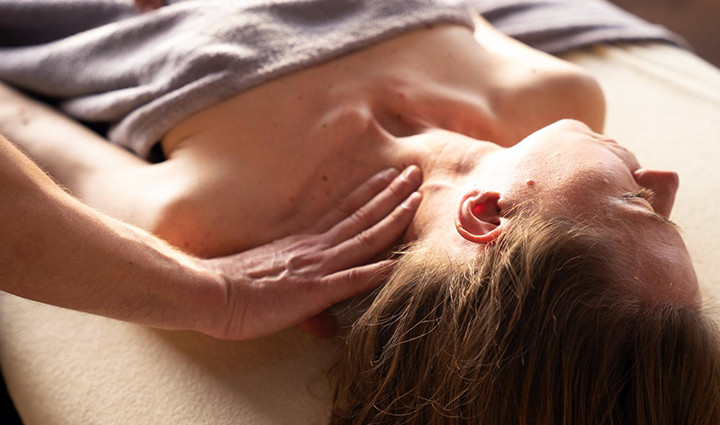The MER modules & how to become a fully certified practitioner
To become a fully certified practitioner in the MER training program, complete all the 7 modules in any order.
Fascia-A Universe Within
80% of the human population experiences chronic pain at any one time. At the root of the physical expression of this pain is an embedded emotional, spiritual, and mental energy pattern that is coiled within the connective tissue that lubricates, organizes, and binds all of the physiological structures within the body. This tissue is named ‘Fascia’ - a Latin word meaning ‘band’ or ‘bandage’.

Myofascial Energetic Release Training
Myofascial Energetic Release Training is a continually updated, 7-part (+ online courses) integrative system designed to meet the increasing demand for professional bodywork practitioners and the personal and developmental needs of each student. This profoundly transformational training teaches you how to assist people with various types of chronic pain, including back pain, plantar fasciitis, jaw pain (TMJ), migraines, cervical pain, fibromyalgia, postural realignment and more.
The 7 elements of MER

What is the Myofascial Energetic Release Training?
In the Myofascial Energetic Release (MER) Training, you will learn the art and science of providing deep bodywork with assisted stretches, myofascial unwinding, joint mobilization, trauma and emotional awareness with release. Your master teacher, Satyarthi Peloquin, possesses 50 years of experience as a therapist and trainers.
Objective of MER
The objective of MER is for you to develop the confidence, knowledge, and skills to successfully root yourself into your own personal experience of MER. In turn, you will skillfully facilitate a transformational experience with your clients and create a thriving practice.
The Main Cause of Pain
The main cause of pain and tension in the body is over-contraction of the five types of soft tissue: Muscle, fascia, skin, ligament, and nerves. This chronic tension blocks blood circulation, oxygen, and vital energy to these soft, sensitive tissues.
Skillful Approach
As you learn how to firmly and gently open the body’s deeper soft tissue layers, you encounter stuck energy in the form of shortened, hardened tissue. You will master how to skillfully apply sensitive deep touch to release these energy blocks.
Empowering Clients
This touch, in alignment with the Pro-Active Participation of the client’s deep breathing and your verbal cues, allows your client to develop awareness of the cause of pain.
Treating the Whole Person
In the training, you will learn to activate the body’s natural ability for self-regulation and healing, giving your client profound and lasting relief from pain.
Myofascial Energetic Release Session
The goal of a Myofascial Energetic Release session is to relieve pain, restore physical function, and achieve balance between the body and mind, allowing the client to lead a full, active life.
Training Details
The Myofascial Energetic Release Training consists of seven 6-day modules, 60 x 90 minutes sessions and 10 hours of online course for practitioners seeking to delve deeper into releasing emotional energy.
All modules are conducted at our training centers located in France, Poland, Greece and England.
In total, the training comprises 450 hours, encompassing the core modules as well as additional online courses, including Body Reading Types and Trauma and Nervous System.
An Environment of Learning
The 7 modules create an environment where learning takes place with empathy, presence, and acceptance.
Core Emphasis on Meditation
The common thread woven throughout the training is the core emphasis on meditation. Meditation nurtures a calm mindfulness with an open presence as you work with a client.




